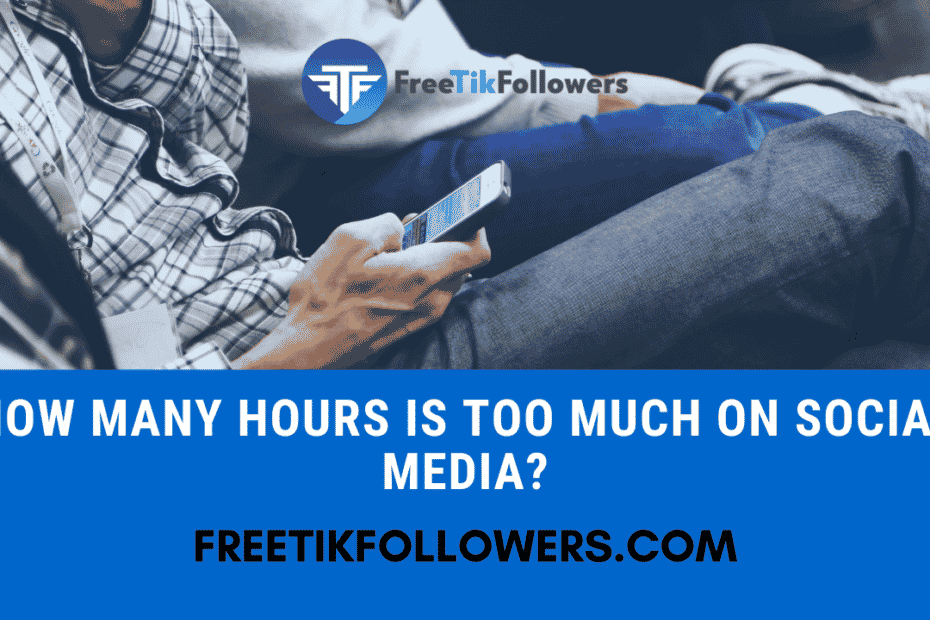It’s hard to argue that social media hasn’t fundamentally transformed the way we live our lives. Before social media, you’d have to physically call someone if you wanted an update on their lives; now, you get their status updates beamed directly to your phone, or you get to see what they’re up to in the form of an Instagram post or a TikTok video. Similarly, in the era before social media, it wasn’t easy to talk to someone, but now, you can simply drop them a message on one of many services and they’ll be able to get back to you immediately.
Although this has undeniably increased convenience for many users and helped lots of people to stay in touch with one another, social media also has its dark side. There are suggestions that it negatively impacts mental health, for example, and research has also shown that social media can be instrumental in disseminating fake news and misinformation (and, indeed, disinformation). With that in mind, you might be asking yourself how many hours is too much on social media. That’s the exact question that we’re here to answer today.
Three hours is the golden time

According to a study published by the JAMA Psychiatry network, adolescent social media users who spent a disproportionate amount of time each day accessing social media were at higher risk of “internalising and comorbid internalising and externalising problems”. In layman’s terms, this means that teens who use social media for more than three hours a day are more at risk of mental health problems, in particular those that are “internalising” (think anxiety or depression rather than paranoia).
How does social media cause harm?

One of the aforementioned JAMA Psychiatry paper’s authors, Kira Riehm, told The List that there could be a number of factors involved here. It’s not just “accessing social media” that can cause serious harm; as you might expect, it’s more complicated than that. Here are some of the ways in which social media can cause harm, according to Riehm and the paper.
- Exposure to cyberbullying. Social media can be especially dangerous when it comes to increasing teenagers’ exposure to cyberbullying. The more time they spend talking via social media messenger apps or sharing content of themselves, the more they may be opening themselves up both to malicious trolling and to fellow students at school or other acquaintances with malign intent.
- Poor sleep. It’s been well-documented that blue light, which is emitted by most screens, can seriously interfere with a good sleep pattern. Those who access devices that emit blue light often find it harder to fall asleep, and their sleep is often interrupted more. If a teenager is accessing social media before bed, then they’re going to find that it’s more difficult for them to sleep, and this is before any of the mental health problems social media can cause.
- Disconnect between idealisation and reality. One of the biggest issues with social media is that it can cause us to dissociate ourselves from real life. We fall for the idealised presentations of people on apps like Instagram and TikTok, and we don’t realise that these are being manipulated for our consumption. This can happen even when we’re creating content about ourselves; we can fall for the filters and the video editing features, forgetting who we really are in the process.
It’s not just mental health

If you spend more than three hours a day on social media, it’s not just mental health problems that you may be exposing yourself to. In fact, a study found that those who use social media “excessively” had higher levels of CRP (C-reactive protein), which is a chronic inflammation marker in the body that predicts illnesses like diabetes and cardiovascular disease, as well as certain cancers.
Social media was also found to cause other physical health problems besides elevated CRP. These problems include chest pain and back pain, as well as frequent headaches and increased visits to healthcare professionals. Some of these problems may be linked more to the use of devices on which social media can be viewed rather than the media itself, but the two go hand in hand and it is impossible to separate them.
How much time should you spend on social media a day?

Naturally, the jury is out on this question. Some believe that you shouldn’t access social media at all, as its detrimental effects far outweigh any benefits they might feel. However, if you are going to use social media, then according to the Guildford Press Journal of Social and Clinical Psychology, you should be limiting your social media use to around thirty (30) minutes per day. This goes across platforms and is not on a per-platform basis; you should not, for example, use Facebook for 30 minutes, then use Instagram for 30 minutes and so on. The 30-minute total is cumulative, spread across any apps you might particularly enjoy.
It’s not easy to hear that social media can seriously damage your health if you use it excessively, but that’s certainly where the research is pointing. This makes sense, though; as with anything else, using social media in moderation is the key and should help you to maintain a sense of perspective and balance in life. Any more than that and you may start to experience serious mental health problems (or the ones you already suffer from may be exacerbated). If you’re struggling with social media use, try setting a timer on your phone or on another device so that you know exactly when your allotted period is up.
